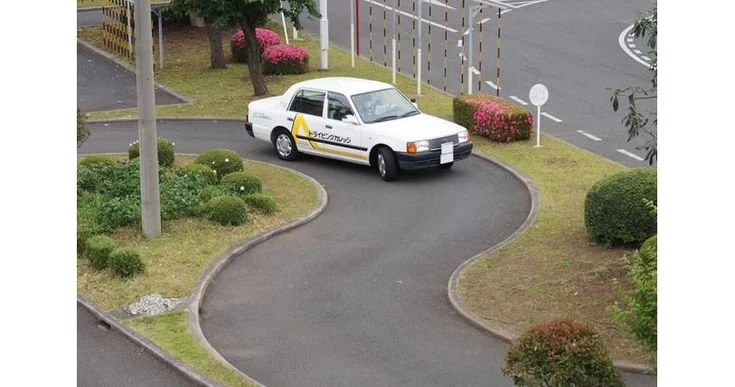Convert Your Foreign Driver’s License in Japan (2025 Update): What Changed and How to Pass Under the New Rules
Starting October 1st, 2025, Japan’s gaimen kirikae (foreign driver’s license conversion) system has become significantly stricter.
Until now, foreigners were able to obtain a Japanese license relatively easily — sometimes even with temporary housing documents or simplified written tests.
However, due to rising road accidents and misuse of the system, the National Police Agency (NPA) has introduced new verification standards and test reforms.
This guide explains what changed, why the government made these revisions and how to prepare — so that you can still succeed at your first attempt.
This article covers:
1. What Changed from October 2025
2. Why the Change?
3. Reciprocity 101: Skip Tests or Sweat It?
4. How to Pass on the First Try
5. International Driving Permit (IDP): Your Short-Term Driving Hack
6. QA
7. Wrap up
1. What Changed from October 2025
The reforms focus on two major tightening areas:
a. Address verification when applying for or renewing a license.
b. Knowledge and Driving Test for non-reciprocal countries.
Let’s look at both in detail.
a. Stricter Address Verification
✅ Note:
Tourists, exchange students, and business visitors on short stays will no longer be able to obtain a Japanese license unless they can show valid residence records.
Tourists/short-stayers: Stick to public transit or International Driving Permit (IDP). (See Section 5)
Expats on work/spouse visas: Smoother if you're over 3 months in
Pro move: Register your address at city hall within 14 days of arrival. Use the My Number app for digital certificate of residence/juminhyo, but print it—examiners want paper.
b. Tougher Knowledge and Driving Tests
Knowledge Test (Written)
✅ Note:
Languages available: English, Japanese, Vietnamese, Tagalog, and 18 others — total 21 languages supported.
Key change: No more illustration-based clues; candidates must understand the written scenarios accurately.
Driving Test
✅ Note:
The new rule also adds course-based hazard awareness tasks, reflecting Japan’s emphasis on procedural safety over intuition.
The scoring standards have been made stricter, now matching the level used for new driver’s license applicants.
2. Why the Change?
These updates stem from several policy concerns:
Rising traffic accidents involving foreign drivers — particularly short-term residents unfamiliar with Japanese road customs (pedestrian priority, narrow roads, cycling zones).
Public demand for fairness and safety — Domestic drivers must complete intensive training, while foreign-license holders were seen as receiving easier treatment.
Tourism boom and rental car risks — Car rental companies increasingly require Japanese-language comprehension at contract signing, citing safety and liability issues.
👉 In short, Japan is reinforcing that driving here is a privilege tied to stable residency and local accountability.
3. Reciprocity 101: Skip the Tests or Sweat It?
Japan recognizes reciprocal agreements with certain countries and regions.
If your country is on the list, you can convert your foreign driver’s license to a Japanese one without taking the full driving test.
Drive in Japan using home license + translation(as of 2025): Drivers from Belgium, France, Germany, Monaco, Switzerland, and Taiwan can use their home-country driver’s license together with an official Japanese translation (issued by JAF or their embassy). This allows them to drive in Japan for up to one year after entry without conversion.
Countries with Full Reciprocity (as of 2025): Drivers from these countries can convert their foreign license to a Japanese one with only an eye test and a short interview — no written or driving test required.
Iceland, Ireland, the United States (limited to Ohio, Oregon, Colorado, Virginia, Hawaii, Maryland, and Washington), the United Kingdom, Italy, Australia, Austria, the Netherlands, Canada, South Korea, Greece, Switzerland, Sweden, Spain, Slovenia, the Czech Republic, Denmark, Germany, New Zealand, Norway, Hungary, Finland, France, Belgium, Poland, Portugal, Monaco, Luxembourg, and Taiwan.
To qualify, you must also meet the following conditions:
Your license must be accompanied by an official Japanese translation issued by an authority designated under the relevant Cabinet Order.
It has been less than one year since your most recent entry into Japan.
Countries/Regions with Partial Reciprocity (as of 2025): Indiana (U.S.) – The driving test is waived.
Non-Reciprocal Countries (as of 2025):
If your country or U.S. state does not have an agreement with Japan (e.g., most U.S. states, India, the Philippines, China, etc.), you’ll need to complete the full process:
Prepare your application (See below)
Submit your application and make an appointment for the written test.
Written Test – 50 multiple-choice questions; 90% required to pass.
Driving Test – Conducted at your prefectural driver’s licensing center.
Interview (approx. 10 minutes) – Covers your driving history, experience, and any accident record.
If You Need to Sweat It — Things You’ll Need
A valid driver’s license from your home country (must be issued at least three months before you moved to Japan)
Official Japanese translation (issued by JAF or your embassy in Japan)
Certificate of Residence (住民票) with the following conditions:
Must include specific details required for licensing (特定事項が記載されたもの)
Photocopies are not accepted
Must not include your MyNumber
Must be issued within six months of the application date
Passport
Proof that you lived in the country where your license was issued for at least three months after obtaining it.
Application form and one ID photo (3 × 2.4 cm)
License conversion fee: approximately JPY3,000–JPY5,000 (depending on prefecture)
✅ Tip: Bring your Residence Card (在留カード) and MyNumber Card, if you have them — some licensing centers may ask for them during verification, and they’re also required when renewing your license.
✅ Tip: Required documents vary depending on your home country. (See more detail)
Failing means starting from scratch - and in Japan, that usually involves very intensive retraining.
4.How to Pass on the First Try — Practice and Prepare Smart
The pass rate for Japan’s driving test is only 20–30%. That means even experienced drivers often stumble, not because they lack skill, but because they don’t know what examiners are really looking for.
Common Reasons for Failure
a. Not understanding Japanese-style safety motions
The test isn’t just about technical driving ability. Examiners check whether you truly understand Japan’s traffic rules and Japanese-style safety motions.
b. Not being used to left-hand traffic
If you’re from the U.S., China, Vietnam, or the Philippines, you normally drive on the right side of the road. During the test, there’s usually only one vehicle on the course — your car. Without other cars to follow, it’s surprisingly easy to make a wrong turn or drive on the wrong side when you’re nervous. Turning right at an intersection is a common moment where this mistake happens — and it’s an instant failure.
c. Difficulty understanding Japanese instructions
The driving test examiner is a police officer, and instructions are given only in Japanese. If you don’t understand the commands clearly — or hesitate because of confusion — you’ll be marked down. Some test-takers panic under pressure and end up making avoidable mistakes. (See QA6 for what you can do)
Practice Before You Go!
I highly recommend practicing before you take the test. Otherwise, you’ll never know the “exaggerated safety motions” that examiners expect to see.
Yes, it costs money — but in the long run, it will save you both time and frustration (and probably money, too).
Practice exaggerated safety motions — especially at pedestrian crossings, right turns and 5 points check.
Many driving schools offer a “mock test day” using the same course as your local licensing center.
This is what you need to do — the “Five-Point Check.” - you really have to point!
The five points before you start driving are:
Left over-the-shoulder check: Turn your head widely to the left to confirm safety behind you.
Left side mirror: Check the left side mirror to ensure the rear and left side are clear.
Rearview mirror: Use the rearview mirror to check directly behind the vehicle.
Right side mirror: Check the right side mirror to confirm safety on the right side and behind.
Right over-the-shoulder check: Turn your head widely to the right to confirm safety behind you.
These exaggerated safety motions might feel awkward at first, but examiners expect to see them clearly — it’s their way of confirming that you understand Japan’s definition of “safe driving.”
Recommended options:
FCA Japan – Driving License Conversion Support
Koyama Driving School (English Info)
Shin Tokyo Driving School (English Lessons)
If you don’t have time to practice, at least watch YouTube!
However, since the new rules have just been introduced, it’s better to take an actual training session for now.
🚗 Personal Reflection
When my husband decided to get Japanese driver’s license, his U.S. permit was close to expiring — which meant he had only one real chance to pass the driving test, even though most people need three to six attempts.
We hired a private instructor for one-on-one lessons — six sessions in total, two hours each, at JPY5,500 per session — to learn the specific rituals and precision that define safe driving in Japan. I sat in the back seat, translating as we went.
Result? On test day, 72 people took the driving test. 12 passed, and just two did it on their first try — my husband and a former U.S. police officer.
Ishikawa Prefecture: Chirihama Beach Driveway
5. International Driving Permit (IDP): Your Short-Term Driving Hack
The International Driving Permit (IDP) is your short-term ticket to the road. It allows you to drive legally while you settle in, explore, or prepare for the license conversion process.
Who Qualifies
Tourists and short-term visitors: Perfect for travelers or business visitors staying less than one year — great for weekend drives or road trips.
Temporary residents: Check with your local licensing center; some visa categories have specific restrictions or shorter validity.
Validity Rules
Your IDP is valid for up to one year from your date of entry into Japan.
If you leave Japan and re-enter, the one-year period resets, but only if your re-entry is genuine (not a same-day “visa run”).
How to Get an IDP
You must obtain your International Driving Permit (IDP) in your home country before arriving in Japan. Make sure to get it from an authorized organization — and whenever possible, apply in person rather than online, to avoid scams or delays.
AAA (United States) – about $20, same-day service at most branches
AA (United Kingdom) – In-person at PayPoint stores for same-day ease
RAC (Australia) – usually processed within one week
What you’ll need:
A valid home-country driver’s license
Two passport-size photos
Government-issued ID (passport or national ID card)
Limits and When to Switch
Most car rentals require both your IDP and your original driver’s license, plus your passport.
Some rental agencies (like Toyota or Nippon Rent-A-Car) may give you a short road sign quiz before you drive off — safety rules are getting stricter to reduce accidents.
Electric vehicles (EVs) are covered, but familiarize yourself with local charging stations in advance.
6.Q&A: Common Questions About the New Rules
Q1. Can I still convert my license if I’m on a 3-month short stay?
Q1: No. After October 2025, only residents with a valid address certificate (住民票) can apply. Hotel stays or temporary accommodations are no longer accepted.
Q2. What languages are available for the written test?
A2:21 languages including English, Japanese, Chinese, Vietnamese, Tagalog, Thai, Portuguese, Spanish, and others. The test no longer includes pictures — comprehension is key.
Tokyo (Japanese) https://www.keishicho.metro.tokyo.lg.jp/menkyo/menkyo/foreign_exam.html
Q3. How many times can I retake the driving test?
A3: There’s no limit on the number of attempts until your home-country driver’s license expires, but each test requires additional fees and time.
Q4. When will I get my driving test result?
A4: You’ll receive your result on the same day as the test. If you pass, you can usually receive your Japanese driver’s license that day as well.
Q5. Where can I find more information, such as where to apply?
A5: The best way is to check your local prefectural police department’s website for details.
For example:
Kanagawa Prefectural Police – Driver’s License
Q6. Do the examiners speak English or other languages during the driving test?
A6: Typically, no — or only a little. When you take the driving test, if you’re not the first test-taker, you’ll sit in the back seat and observe the person before you. This helps you understand the flow of the test even if you don’t speak Japanese.
Knowing a few basic Japanese phrases, such as “Onegai shimasu” (please/thank you in advance), can make a good impression.
7.Wrap Up
🚗 Your safety comes first.
Japan’s tightened conversion system isn’t meant to discourage foreigners — it’s designed to raise safety standards and ensure consistency on the road.
You’ll quickly notice how narrow many roads are in Japan, and how motorcycles, bicycles, and pedestrians often travel very close to your car.
If you’re planning to convert your foreign license, check the expiration date of your license from home country, prepare carefully, gather complete documents, and practice the formal style of driving expected on driving test day.
Once you pass, the road ahead opens up to parts of Japan you can’t reach by train — from hidden onsens to remote coastal towns.
Thinking about converting your license — or already passed the test?
I’d love to hear how it went! Drop your experience or questions in the comments!
See also:
Insurance 4: Driving, Pets, and Unemployment
Insurance 2 - Life, Income, and Long-Term Care
Insurance 3: Must-Have Disaster & Property Coverage (+ Free Checklist)
Fukushima Prefecture Mt.Bandai Gold Line ↓










